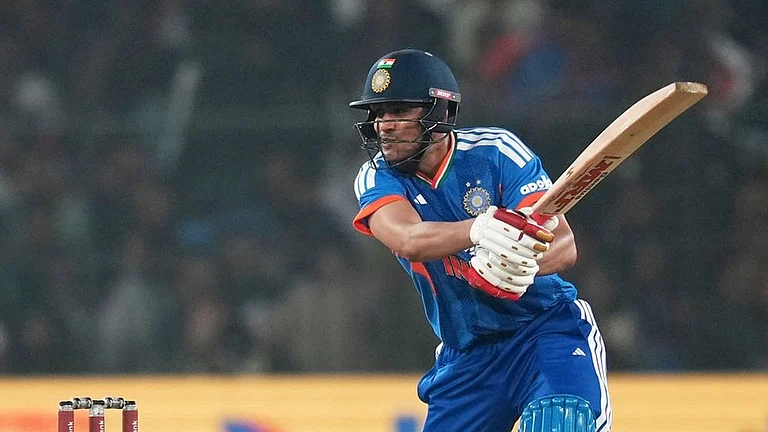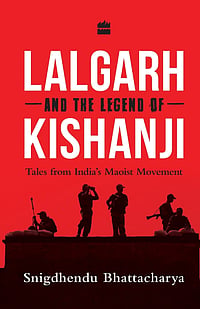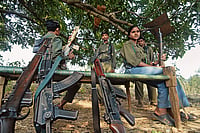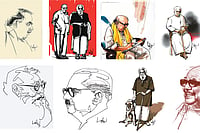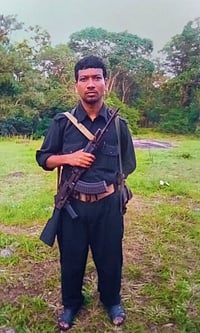Sabitri Heisnam discarded her clothes, one by one, facing a ‘military officer’. It was April 14, 2000. The final scene of an hour-long play, Draupadi, being premiered at an auditorium in Imphal, Manipur. Fifty-four-year-old Heisman was playing the protagonist, Draupadi (or Dopdi) Mejhen, who had been subjected to sexual torture in the custody of the armed forces. The audience was taken by shock and awe as Heisnam stood stark naked after flinging her last cover, the lower garment phanek, on the general.
Another show was staged six days later and that was the end of it for Kalakshetra Manipur’s Draupadi in Manipur, at least till 2014. The play’s director, Kanhailal Heisnam, and his wife, actor Sabitri Heisnam, found themselves at the receiving end of widespread criticism and condemnation from Manipur’s mainstream media and civil society, including feminist groups, for the use of nudity as a mode of protest against sexual violence.
It was an adaptation of a story, titled Draupadi, penned by Jnanpith and Magsaysay award-winning writer Mahasweta Devi in Bengali in the backdrop of the Naxalite uprising of the early 1970s and the subsequent state repression.
In Mahabharata, Lord Krishna prevented the public disrobing of Draupadi as her five husbands, all complicit in her humiliation, stood mute spectators. In West Bengal of the early 1970s, 27-year-old Draupadi alias Dopdi Mejhen, a tribal, Naxalite guerrilla activist whose comrade and husband had already fallen to the police’ bullets, refused to be robed after she had been subjected to repeated rape in the custody of the security forces. Her advancing, bleeding, bare body scared the Senanayak, or the general, to no end.
Draupadi first appeared in the Sharadiya (festive) issue of the leftist literary journal Porichay in 1977 and was included in Mahasweta Devi’s short story collection, Agnigarbha, published the next year. Draupadi became known beyond the borders of Bengal when Gayatri Chakravorty Spivak translated the story into English in 1981.
Four years after the Heisnam couple faced condemnation for their stage adaptation of the story, a rather dramatic turn of events in Manipur prompted a section of its civil society to call the theatre couple ‘prophetic’ for the very production. In July 2004, 12 elderly Meitei women posed naked in front of Kangla Fort in Imphal, where the 17th Assam Rifles was stationed, with a banner reading: “Indian Army Rape Us.”
That was in the aftermath of the rape and murder of 32-year-old Thangjam Manorama, allegedly by a group of Assam Rifles men. The protesting women thought they had had enough of state repression facilitated by special laws protecting armed security forces for their extra-judicial actions.
Nevertheless, even that honour of prophecy did not help the Heisnams in staging the play again in their homeland ever again till 2014, even as they performed it in cities in different parts of India.
The Heisnam couple was not the only ones to face trouble trying to retell Draupadi. In 2016, two months after Mahasweta Devi’s death, a group of teachers and students from the department of English at the Haryana Central University staged Draupadi to pay homage to the writer.
The performance did not include nudity but those involved in the production landed in trouble nevertheless, as its contents enraged a section of local residents, ex-soldiers and activists of the Akhil Bharatiya Vidyarthi Parishad, the student wing of Rashtriya Swayamsevak Sangh (RSS), the parent organisation of the Bharatiya Janata Party (BJP) that is ruling India since 2014.
The teachers and students were accused of insulting India’s armed forces and faced the varsity’s internal probe.
Five years since then, Draupadi seems to be still haunting the men in power, as Delhi University (DU) recently decided to drop the text from its BA (hons.) syllabus. The same allegation continues – it puts India’s armed forces in poor light.
“I think this recent removal of the story from the DU syllabus proves the success of Mahasweta’s Devi’s writing – those in power still cannot stand the power of its language and contents,” said Bengali theatre director Debesh Chattopadhyay, who has read the original story in Bengali and also watched the theatrical adaptation by the Heisnams four times.
“Talking of the theatrical adaptation, the last scene was intolerable. I could not watch it. I had to close my eyes every time,” he said.
The story of this story becomes a little more intriguing with the fact that while Kalakshetra Manipur staged the play in Kolkata six times between 2001 and 2017 – with the who’s who of Bengali theatre occupying the chairs in the audience every time – no theatre group in West Bengal, a state known for a rich heritage of political theatre since the 1950s – ever attempted to stage Draupadi.

Her Repertoire Volumes of Mahasweta Devi’s fiction displayed at a bookshop
Responding to why the story found no theatrical adaption in Bengali, Chattopadhyay said he thought the Left Front government coming to power in the state in 1977 was the key reason, as following this theatre in Bengal started preferring social issues over political so as not to disturb the leftist government.
Writer and academic Trina Nileena Banerjee nearly echoed him. “As long as an artist is in a comfort zone in her or his relation to State power, it is very difficult for the person to retell this story. In West Bengal, that comfort zone existed since the Left Front government came to power in 1977, even if the beneficiaries of the comfort zone changed with time and subsequent changes in regime.”
A deep sense of being pushed to the wall is embedded in the story and this cannot be faked, she said, adding that retelling the story required a certain amount of desperation, conviction and fearlessness. “Perhaps, in Manipur, the society reached such a state that Kanhailal and Sabitri felt the urgent need to retell the story and later a protest took the same mode developed organically,” she said.
Banerjee had pointed out in her research that none of the 12 protesting Meitei women knew of the theatre performance that had taken Manipur’s civil society by shock in 2000. Their protest against Manorama’s rape and murder was purely organic.
But while art might not have inspired political protest in this case, Mahasweta Devi’s original story was inspired by her experience of tribal life in the midst of security operations against the Naxalite uprising in the late 1960s and early 1970s.
Fiercely independent and fearless in her personal life, Mahasweta Devi (1926-2016) was an activist writer – a Leftist, feminist and relentless crusader for tribal rights. That fearlessness and involvement with activism reflect in most of her literary work – including novels like Aranyer Adhikar and Hajar Churasir Maa – as she conceived literature as a mirror to the society.
Daughter of renowned Bengali writer Manish Ghatak, Mahasheta had radical, anti-establishment artists all around in her near family – uncle Ritwik Ghatak being a legendary filmmaker, husband Bijon Bhattacharya an iconic theatre personality and son, Nabarun Bhattacharya, a cult Bengali writer.
“She was an activist writer. She used her writings for documentation. The basis of her fiction was real-life incidents. Draupadi, too, holds a mirror to a frightening reality,” recalled writer, art curator and documentary filmmaker Ina Puri, a niece of the writer who got to knew her quite closely.
Puri said that Mahasweta Devi felt deeply related to the tribal people. She lived with them in Purulia for long durations, learnt their language and songs, bathed with them in the rivers. “She even tried to promote their handicrafts. I remember tribal people turning up in Kolkata after her death, weeping like they have lost their mother,” Puri said.
Mahasweta’s fearlessness also reflected when, in 2009, Union home minister P Chidambaram cautioned civil society members against sympathising with or supporting the Maoists (another name for the Naxalites)waging an insurgency across tribal-inhabited areas of central and eastern India, the 83-year-old dared him to send in the police for arresting her.
"I condemned police atrocities against the Naxalites in the 1970s and I am still not scared of being branded a Maoist for taking the right stand. I support the tribal people’s battle to protect their Jal-Jangal-Jameen and if they took up arms, it’s the state that needs to be held responsible for making them that desperate,” she had told this writer, as also to other journalists.
That, in a sense, also summed up the rationale behind Draupadi’s actions.
She spoke up against state repression all throughout her life and cared a hoot about the response she might attract from the state.
Call it an irony or not, in 2016, after her death, the Mamata Banerjee government in Bengal gave her a state funeral, with Kolkata Police paying homage through gun salutes.
(This appeared in the print edition as "Draupadi: Sovereign Power And Bare Life")
By Snigdhendu Bhattacharya in Calcutta










